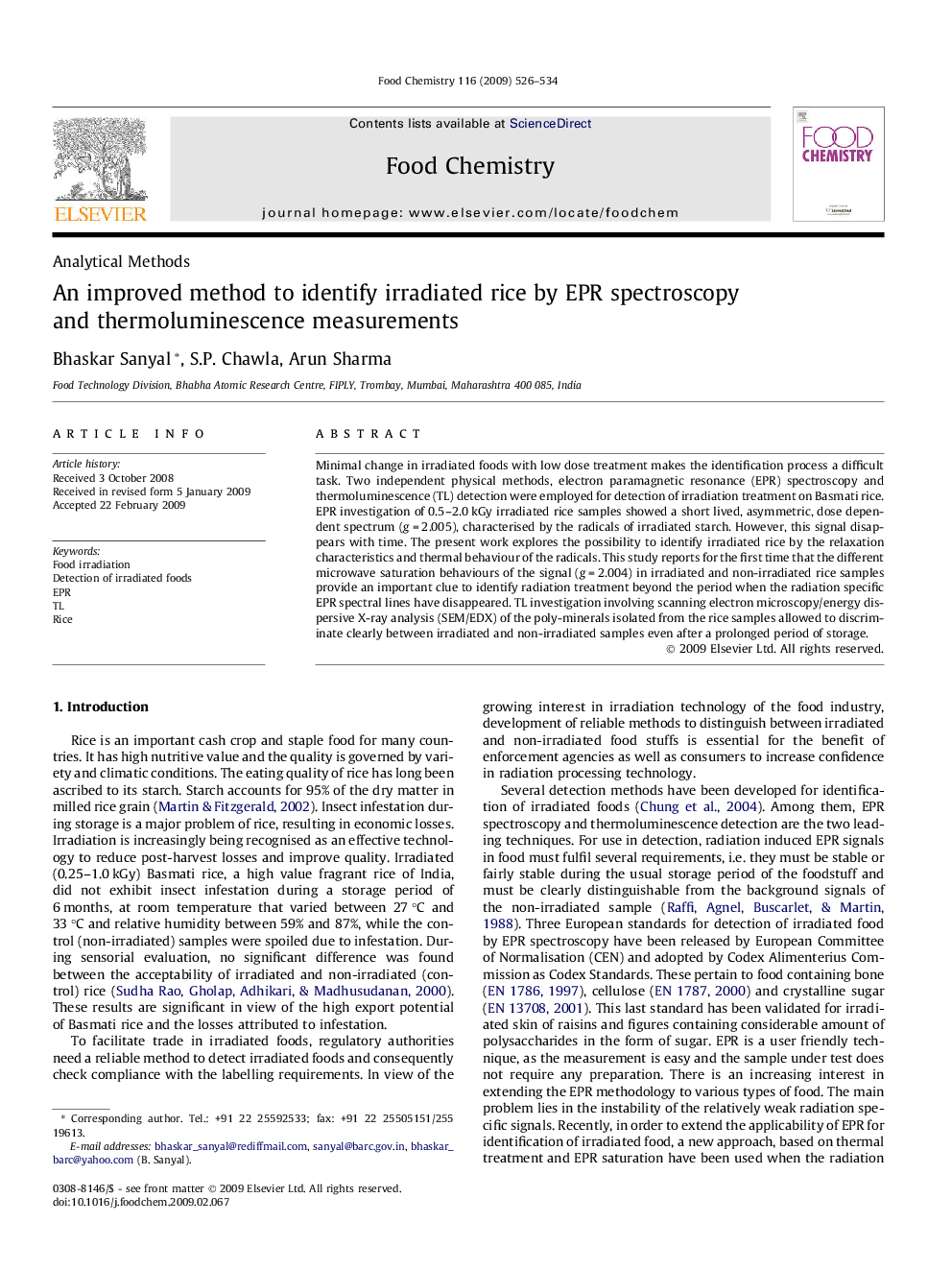| Article ID | Journal | Published Year | Pages | File Type |
|---|---|---|---|---|
| 1187701 | Food Chemistry | 2009 | 9 Pages |
Minimal change in irradiated foods with low dose treatment makes the identification process a difficult task. Two independent physical methods, electron paramagnetic resonance (EPR) spectroscopy and thermoluminescence (TL) detection were employed for detection of irradiation treatment on Basmati rice. EPR investigation of 0.5–2.0 kGy irradiated rice samples showed a short lived, asymmetric, dose dependent spectrum (g = 2.005), characterised by the radicals of irradiated starch. However, this signal disappears with time. The present work explores the possibility to identify irradiated rice by the relaxation characteristics and thermal behaviour of the radicals. This study reports for the first time that the different microwave saturation behaviours of the signal (g = 2.004) in irradiated and non-irradiated rice samples provide an important clue to identify radiation treatment beyond the period when the radiation specific EPR spectral lines have disappeared. TL investigation involving scanning electron microscopy/energy dispersive X-ray analysis (SEM/EDX) of the poly-minerals isolated from the rice samples allowed to discriminate clearly between irradiated and non-irradiated samples even after a prolonged period of storage.
